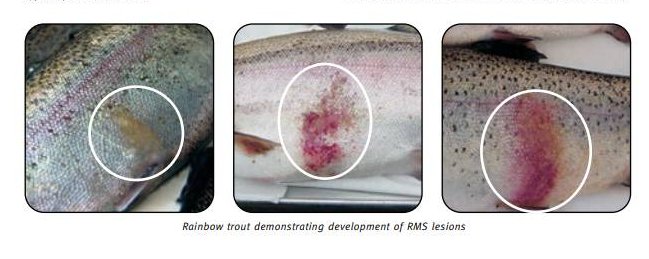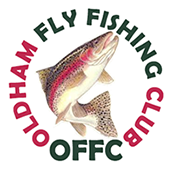Red Mark Syndrome (RMS)
Introduction
Red mark syndrome (RMS) is a chronic and typically nonlethal
skin condition affecting rainbow trout
(Oncorhynchus mykiss). Red mark syndrome has been
observed at several freshwater fish farms in Scotland
since December 2003. The condition is characterised by
single to multiple skin lesions, typically found on the
flanks. These lesions can affect carcass quality, which
downgrades the product and lowers its market value. The
cause is unknown, and investigations into the aetiology
and potential spread of the condition are being carried
out by Fisheries Research Services (FRS) and other
research organisations.
Signs of RMS
Behavioural signs
There is no evidence of behavioural changes associated
with this condition.
Temperature
Red mark syndrome is observed at water temperatures
typically less than 12°C.
Clinical signs
Exophthalmia noted, also skeletal deformity, fin erosion
and opercular shortening (see image below).
Treatment, recovery and withdrawal
Fish affected by RMS can recover without the need for treatment.
Affected fish are safe to eat as this condition affects the skin.


